How to market B2B SaaS: What makes B2B marketing unique?
Though each company will need to determine its own approach, looking to distinct patterns can give you a sense of how to market B2B SaaS successfully.
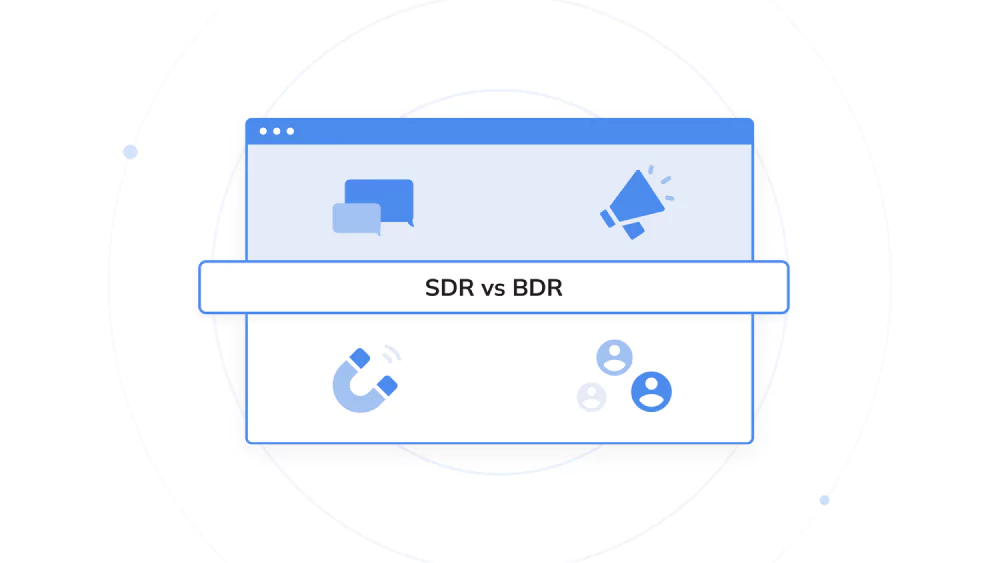
SDR and BDR are acronyms for sales development representative (SDR) and business development representative (BDR). These often-confusing job titles can be difficult for even seasoned sales professionals to distinguish.
Sales development reps (SDRs) are generally tasked with identifying and qualifying sales opportunities from inbound channels. Business development reps (BDRs) are mainly dedicated to finding new business and exploring new markets through outbound channels.
Both BDRs and SDRs are important positions within the sales cycle. With these two inside sales roles being fairly similar, it can be hard to differentiate between the two.
This article will explain the differences between the roles and how they fit into an organization so you can make an informed decision on which role is the best choice for your team.
An SDR is a role that is primarily focused on qualifying inbound leads and eventually turning those that are a good fit into customers by handing off the opportunity to a senior sales executive. SDRs often work closely with marketing and sales to identify prospects, build lists, and then engage those prospects via phone, email, or other communication channels. They are responsible for driving conversations that ultimately lead to appointments for the account executive (AE) to close an opportunity.
A BDR focuses on generating new business opportunities by adding new contacts to the sales pipeline. This is accomplished through outbound prospecting and ABM, also called “cold outreach.”
Every day, a BDR is continually thinking of fresh lead development ideas and strategies to source possible prospects for your funnel. This is typically done through cold calls and emails, and it involves working closely with marketing to support their campaigns.
So, what are the differences between SDRs vs. BDRs, both in how they operate and what they need to focus on? Let's take a closer look:
SDRs have one primary focus: to generate leads for account executives (AEs) to close. They start by qualifying inbound prospects and then moving those prospects through the initial stages of the sales cycle until they become qualified opportunities for AEs to pitch and close.
BDRs also generate leads, but their focus is on generating potential opportunities within their territory instead of passing them off to AEs as soon as possible.
An SDR is responsible for qualifying incoming leads; a BDR is responsible for generating new ones.
An SDR is responsible for moving inbound prospecting and creating new opportunities for other Senior Sales Executives to work with potential clients. Due to the high turnover rate of prospects in this position, SDRs must put in more hours to make more calls and send more emails to prospective clients who may not be as interested in signing up.
A BDR is responsible for nurturing leads that were generated by cold efforts and turning them into opportunities for a senior salesperson to close. They focus on developing relationships with their leads and ensuring that their prospects are a good fit for what their company has to offer.
In conclusion, an SDR has a higher quantity of inbound leads while a BDR has fewer leads, but BDR leads should be of higher value because they are considered a strong fit target within the Ideal Customer Profile (ICP).
SDRs focus on inbound leads, while BDRs focus on outbound leads. Inbound leads are generated by the company's marketing efforts, such as website visitors who fill out a form or convert through an ad. Outbound leads are generated by the sales team through lead generation efforts, such as prospects who have been cold-called or cold-emailed.
The next big difference between an SDR and BDR is sales vs. business development. SDRs are focused on selling a product or service to potential customers, while BDRs focus on developing new relationships with ideal customers and bringing them into the sales funnel.
SDRs need to be able to sell a product or service, while BDRs need to be able to develop relationships. Both skills are important, but they're different.
The answer to this question depends on your company's needs. If you're looking for someone to pick up a large number of inbound leads in a short period, then an SDR is likely the best choice. If you're looking for someone to develop relationships with your ideal clients, then a BDR is the better choice.
It's important to remember that both SDRs and BDRs are important parts of your company's sales cycle. Without SDRs, you'd have no one qualifying your leads and making sure that the information being passed to your AEs is accurate. Without BDRs, you'd have no one turning qualified leads that haven’t heard of your product(s) into actual opportunities.
It is also important to keep in mind that some companies try to define roles that are a mix of both an SDR and a BDR. The complexity of your product and your audience’s size, among other factors, will dictate if you should keep these roles separate or not. You’ll find that both roles are often necessary at some point for a company to be successful. To see some examples on how some SaaS B2B companies like Salesforce, G2 and others define these roles read this T2D3 blog.
If you enjoy looking at real metrics and reading reports. The Bridge Group, a well-respected B2B sales consulting organization, delivers an insightful report every year called "Sales Development Metrics and Compensation Study Report," which in 2022 gathered data from 365 executives at different firms with a median revenue of $45M and median average selling price of $52K. We've included six essential points below.
SDRs report to the head of sales rather than marketing in 68% of cases. However, it's worth noting that almost 60% of inbound teams report to marketing. "This makes inbound groups 2.1 times as likely to report to Marketing as hybrid groups and 4.0x as likely as outbound groups," according to the research.
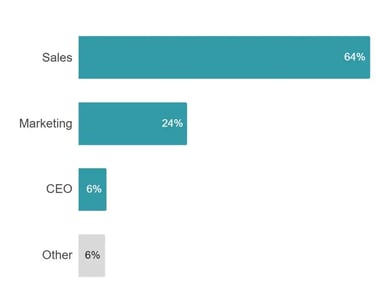
Though not updated in their most recent report, as of 2021 there were generally 2.3 BDRs (outbound) for every 1 SDR (inbound).
.webp?width=374&height=292&name=headcount_mix_of_inbound_and_outbound%20(1).webp)
1 SDR to 2.6 Account Executives is the average ratio. This is in line with studies from 2018.
Two things to note: Firstly, smaller companies are much more likely to deploy one or more SDRs per AE. Secondly, even controlling for revenues, high-growth companies report lower SDR-to-AE ratios than those with slower growth.
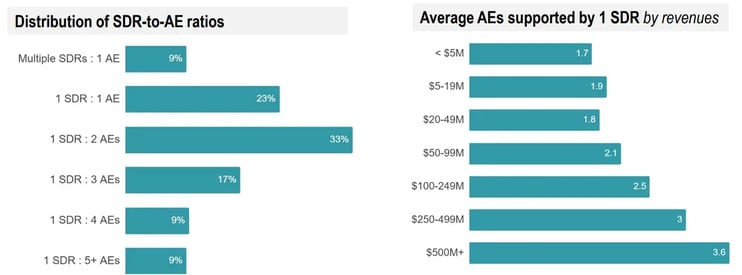
SDRs/BDRs hired today have, on average, only 1 year of experience. In 2010 it was 2.5 years.
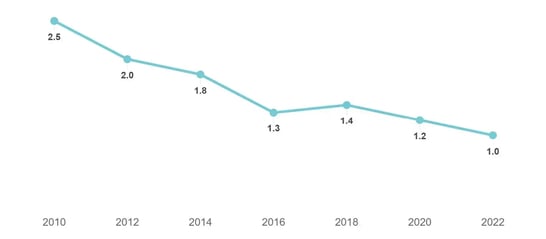
Reps with the same function working in various locations were reported by just 48% of businesses in 2018. Post-COVID, 90% of groups reported being either fully or partially remote.
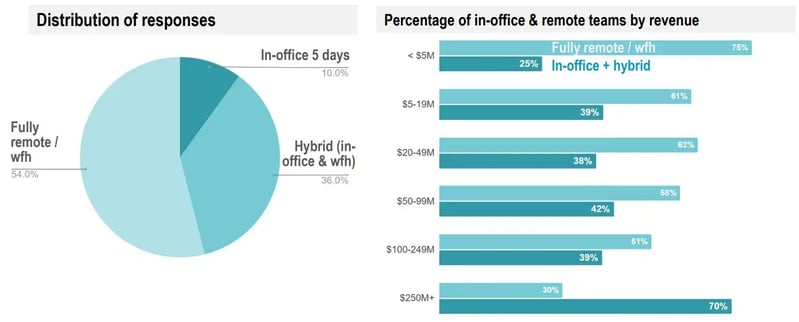
The median on-target earnings were $80K, with a (base:variable) split of 68:32. The median OTE increased only "modestly," continuing a decade-long trend.
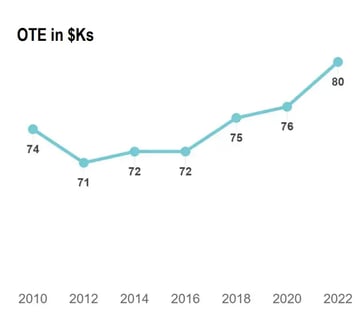
Hopefully, with the information and context provided here, you will have a clearer idea of the distinction between these two similar sales roles and a better idea of what you need for your own business. For more on this, including additional differences between the roles, OKR examples for each, and tips for setting each type of team member up for success, see the T2D3 blog on this topic here.
Though each company will need to determine its own approach, looking to distinct patterns can give you a sense of how to market B2B SaaS successfully.
Here are some basic rules for when you consider discounting your SaaS products or services. When you discount your SaaS Pricing, what did you get in...
Discover what B2B SaaS companies lose when founders step back and how investors can mitigate these challenges to ensure continued growth and...
Be the first to know about new B2B SaaS Marketing insights to build or refine your marketing function with the tools and knowledge of today’s industry.